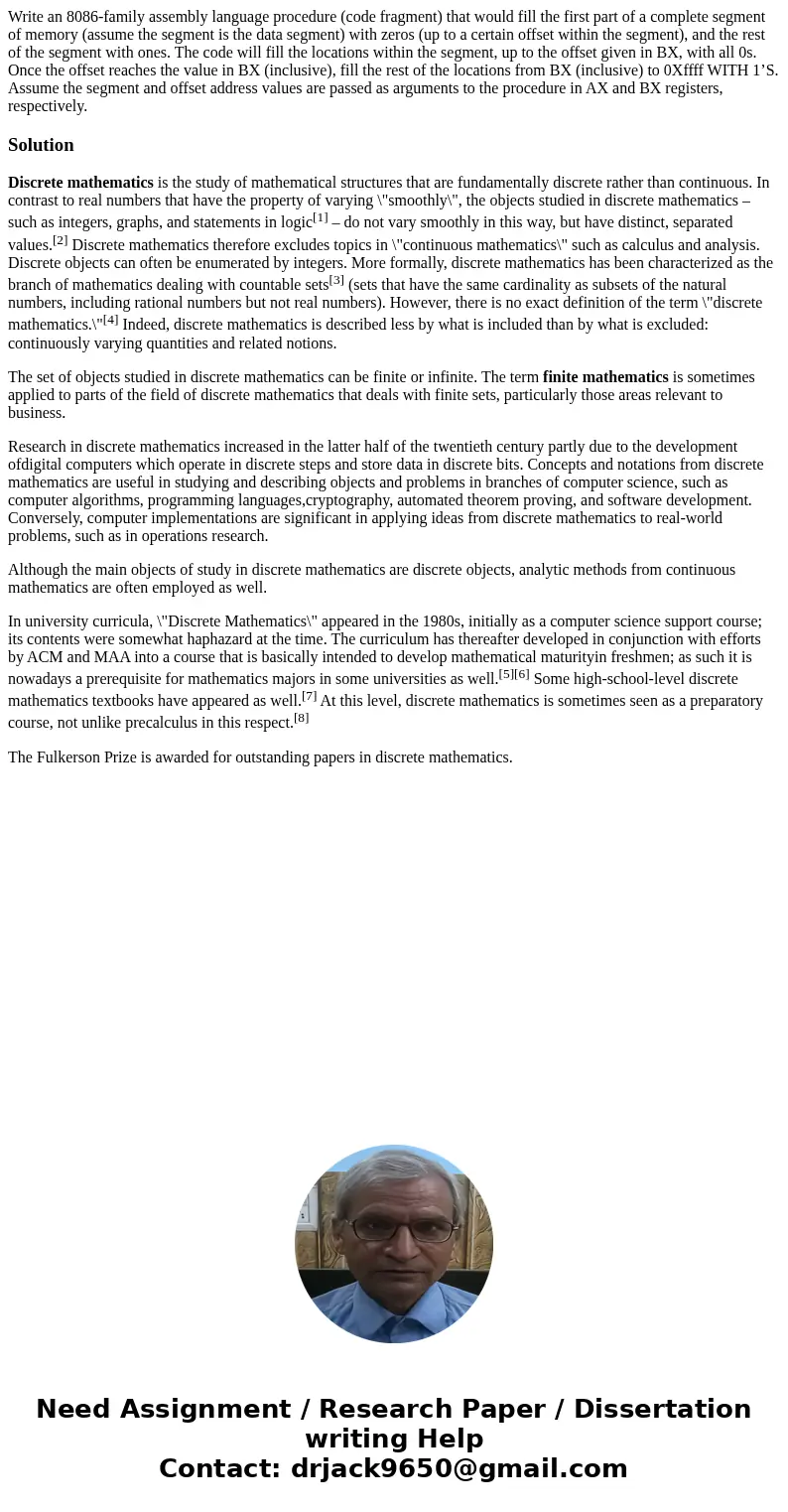Write an 8086family assembly language procedure code fragmen
Write an 8086-family assembly language procedure (code fragment) that would fill the first part of a complete segment of memory (assume the segment is the data segment) with zeros (up to a certain offset within the segment), and the rest of the segment with ones. The code will fill the locations within the segment, up to the offset given in BX, with all 0s. Once the offset reaches the value in BX (inclusive), fill the rest of the locations from BX (inclusive) to 0Xffff WITH 1’S. Assume the segment and offset address values are passed as arguments to the procedure in AX and BX registers, respectively.
Solution
Discrete mathematics is the study of mathematical structures that are fundamentally discrete rather than continuous. In contrast to real numbers that have the property of varying \"smoothly\", the objects studied in discrete mathematics – such as integers, graphs, and statements in logic[1] – do not vary smoothly in this way, but have distinct, separated values.[2] Discrete mathematics therefore excludes topics in \"continuous mathematics\" such as calculus and analysis. Discrete objects can often be enumerated by integers. More formally, discrete mathematics has been characterized as the branch of mathematics dealing with countable sets[3] (sets that have the same cardinality as subsets of the natural numbers, including rational numbers but not real numbers). However, there is no exact definition of the term \"discrete mathematics.\"[4] Indeed, discrete mathematics is described less by what is included than by what is excluded: continuously varying quantities and related notions.
The set of objects studied in discrete mathematics can be finite or infinite. The term finite mathematics is sometimes applied to parts of the field of discrete mathematics that deals with finite sets, particularly those areas relevant to business.
Research in discrete mathematics increased in the latter half of the twentieth century partly due to the development ofdigital computers which operate in discrete steps and store data in discrete bits. Concepts and notations from discrete mathematics are useful in studying and describing objects and problems in branches of computer science, such as computer algorithms, programming languages,cryptography, automated theorem proving, and software development. Conversely, computer implementations are significant in applying ideas from discrete mathematics to real-world problems, such as in operations research.
Although the main objects of study in discrete mathematics are discrete objects, analytic methods from continuous mathematics are often employed as well.
In university curricula, \"Discrete Mathematics\" appeared in the 1980s, initially as a computer science support course; its contents were somewhat haphazard at the time. The curriculum has thereafter developed in conjunction with efforts by ACM and MAA into a course that is basically intended to develop mathematical maturityin freshmen; as such it is nowadays a prerequisite for mathematics majors in some universities as well.[5][6] Some high-school-level discrete mathematics textbooks have appeared as well.[7] At this level, discrete mathematics is sometimes seen as a preparatory course, not unlike precalculus in this respect.[8]
The Fulkerson Prize is awarded for outstanding papers in discrete mathematics.

 Homework Sourse
Homework Sourse